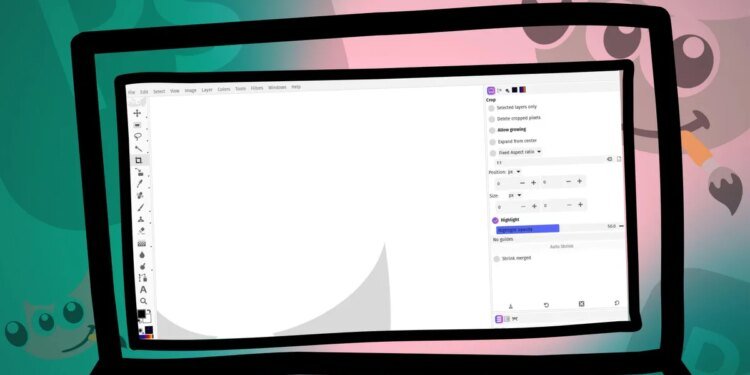
ZDNET key takeaways
- The GIMP picture editor is just not practically as difficult as you would possibly assume.
- There are a number of issues you are able to do to enhance your workflow.
- All of the following tips are free to make use of.
I have been utilizing the GIMP picture editor longer than I can keep in mind. After I first began my GIMP journey, I knew subsequent to nothing about picture modifying; the second I opened GIMP, I felt misplaced. Through the years, I’ve developed not solely an affinity for the applying, however I additionally contemplate it one of many higher picture editors obtainable right this moment.
Throughout years of use, I’ve realized loads about how GIMP works and learn how to use it effectively. In the event you’re simply now beginning with GIMP (particularly after coming from Photoshop), you would possibly discover it particularly daunting.
Additionally: 10 Linux apps I install on every new machine (and why you should, too)
Do not panic — GIMP’s simpler to make use of than you would possibly assume. The next ideas will make it easier to get probably the most out of the open-source picture editor.
1. Be taught and customise the UI
Earlier than you throw your palms within the air and proclaim, “I am unable to work with this consumer interface,” I counsel you first develop into aware of all of the parts of the UI. Though it’d at first look seem like one thing of a multitude, it is really laid out with loads of thought and logic.
Even so, you would possibly choose customizing the UI to greatest fit your wants. If Photoshop has been your picture editor for a very long time, think about using PhotoGimp, a patch that makes it simpler to remodel the GIMP UI right into a more Photoshop-like interface.
Nonetheless, I like to recommend that you simply first attempt to familiarize your self with the usual GIMP format and see if it does not begin making extra sense.
2. Grasp layers and channels
Layers and channels are essential options in GIMP that may actually elevate your work. Primarily, layers are like clear sheets of paper, stacked on prime of one another. Layers make it potential to work on completely different components of your picture independently and non-destructively.
Channels are the fundamental constructing blocks of a layer’s colour knowledge, consisting of particular person colour parts (Crimson, Inexperienced, Blue) and an Alpha channel for transparency. With channels, every layer corresponds to a specific degree primarily based on the colour mannequin of the picture. With each layers and channels, you’ll be able to determine what’s displayed in a picture, making them a really versatile and highly effective device.
3. Ungroup the instruments
In GIMP, it is potential to disable the characteristic that teams comparable instruments collectively in a single icon. For instance, when you click on and maintain the Bucket Fill icon, you will discover that it may be switched to the Gradient icon. Though this does save area within the UI, it may be difficult to recollect what instruments are grouped collectively.
Additionally: How to create a gradient transparency in GIMP
You possibly can disable that characteristic in Settings > Interface > Toolbox and uncheck the field for “Use device teams.” As soon as you have disabled the characteristic, you should restart GIMP for the change to take impact. Now, every device could have its personal button, so you will not need to spend time remembering the place to search out the device you want.
4. Add brushes and fonts
GIMP can use Photoshop brushes. I’ve put in a whole lot of brushes through the years and have discovered they assist make my job a bit simpler. There’s even a GIMP Brush Depot on DeviantArt the place you’ll be able to obtain loads of free brushes. As soon as downloaded, here is the place the brushes needs to be positioned:
- Linux: ~/.config/GIMP/model/brushes, or ~/.gimp-version/brushes
- MacOS: /Customers/USERNAME/Purposes/Library/Software Assist/gimp/VERSION/brushes
- Home windows: C:CustomersUSERNAMEAppDataRoamingGIMP2.10brushes
USERNAME is your username, and VERSION is the model of GIMP you’re utilizing. In the event you’re utilizing Photoshop brushes, be certain to alter the extension title to .gbr.
5. Be taught layer masks
After I realized learn how to use layer masks, my work improved exponentially. Consider layer masks as a grayscale picture used to regulate the transparency of a layer. Within the case of layer masks, black areas disguise the content material layer, white reveals it, and grey creates a partial transparency for clean mixing and selective modifying.
Additionally: How to make GIMP more like Photoshop
You possibly can add a layer masks by right-clicking a layer within the Layers panel after which clicking Add Layer Masks. As soon as the layer masks has been added, you are able to do no matter you want, similar to fading the transparency degree of a specific part of a layer. One factor to recollect is that, whenever you’re completed with the layer masks, it’s a must to apply it by right-clicking the layer after which deciding on Apply Layer Masks.
6. Get to know filters
GIMP features a good assortment of filters. You will discover filters for blur, improve, distort, gentle and shadow, noise, edge detect, generic, mix, inventive, and extra. These filters are a useful device for elevating your work. After I’m working with results and filters, I usually apply them to layers, so they are not world. I exploit Gentle & Shadow > Dropdown Legacy fairly a bit in addition to Blur > Gaussian Blur.
As a result of there are such a lot of filters, you will need to spend a while up-front studying the ins and outs of utilizing every.
Additionally: How to use Layers in the GIMP image editor (and why you should)
7. Set up G’Mic
G’Mic is a free, open-source framework for picture processing. G’Mic provides tons of of algorithmic filters used for manipulating and enhancing your pictures. A variety of G’Mic filters are literally a mix of ordinary filters, which suggests you do not have to undergo and apply extra filters than you’ll be able to handle. G’Mic will prevent loads of work.
You do have to put in G’Mic individually, which is simple to do. For Linux, subject the command sudo apt-get set up gimp-gmic -y. On Home windows, you merely obtain the .exe file, double-click it, and stroll by the set up wizard. (The G’Mic staff doesn’t offert a MacOS port of the software program.) As soon as put in, you’ll be able to entry G’Mic within the Filters menu.
8. Decrease transformations
Minimizing transformations is the apply of lowering the variety of irreversible transformations utilized to a picture to protect its high quality. For instance, when you select to resize a picture, you need to be certain to make use of the suitable interpolation technique and keep away from pointless repeated scaling. This may forestall extreme pixelation and/or lack of element. Primarily, minimizing transformations is one other means of claiming “avoiding picture degradation.”
9. Make use of auto colour changes
Coloration grading could make or break your pictures. Whereas grading is used principally for video, the automated colour changes can be utilized to nonetheless photographs. Auto colour changes might be discovered within the Colours > Auto folder, the place you will discover changes for equalize, white steadiness, stretch distinction, stretch distinction (HSB), colour improve, and colour improve (legacy). Utilizing these instruments is an effective way to enhance the colour of your pictures.
Additionally: How to export images as PDFs in GIMP
10. Use multi-window mode
The default GIMP format slaps all the pieces right into a single window. Nonetheless, multi-window mode locations these instruments in particular person home windows, so you’ll be able to transfer them precisely the place you need. As soon as you have modified to multi-window mode, these instruments are not restricted to remaining in the principle GUI; you’ll be able to drag them round and place them the place you want.
Consider multi-window mode like this: Single-window consolidates all the pieces right into a single window, whereas multi-window breaks the UI into a number of home windows, which you’ll drag round and use as wanted. To make use of multi-window mode, go to the Home windows menu in GIMP and click on Single-window mode to disable the characteristic.



